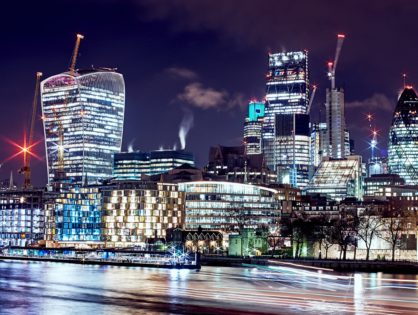
[The] Smart City Challenge, [asked] mid-sized cities across America to develop ideas for an integrated, first-of-its-kind smart transportation system that would use data, applications, and technology to help people and goods move more quickly, cheaply, and efficiently. The Challenge generated an overwhelming response: 78 applicant cities shared the challenges they face and ideas for how to tackle them. Then, [the] seven finalists worked with DOT to further develop their ideas.
https://www.transportation.gov/smartcity
Before I go too far down the path of the Challenge itself, I want to take a moment and talk about what a Smart City is exactly. Basically, a Smart City incorporates the use of data collected through a variety of methods – such as sensors, cell phones, traffic cams, kiosks and other components of the Internet of Things – and uses this data to better manage how the city operates. It can help increase public safety, reduce traffic congestion, assist with parking, monitor public health, and so many other things. A really great overview article from the Wall Street Journal earlier this year gives real-world examples of what cities are already doing.
Another part of Smart Cities, which explains why I’m so excited, is that they also inherently support sustainable development. Less traffic congestion = fewer emissions, smart street lighting = better for nocturnal animals and also reduced energy consumption, connected transportation systems promote greater social equality, more data on public health can lead to better air and water quality. Sometimes the environmental and sustainability aspects are the driving forces behind cities wanting to become smarter, sometimes they happen in the background – generally when projects are looked at for long-term financial savings. Either way, smarter cities lead to more sustainable cities, and that’s a win in my book – and worthy of geeking out over! ? If you’d like to learn more about Smart Cities in general, there are a TON of resources out there – from vendors to TED talks to news articles. Some of the ones I found to be the most helpful are listed below:
- https://www.wsj.com/articles/the-rise-of-the-smart-city-1492395120
- http://smartcitiescouncil.com/
- http://www.verizonenterprise.com/products/internet-of-things/smart-cities/
- https://www.cisco.com/c/en/us/solutions/industries/smart-connected-communities.html
Unfortunately, the Capital Region here in NY was not selected as a finalist of the Smart City Challenge (although they did submit a vision statement which you can see here if you’re interested), but it was still really interesting to see what different cities came up with as challenges and solutions. You can see the overview of the lessons learned on the Smart City website here, and download the report if you’re interested in diving deeper.

Columbus, OH was the winning city and they shared a lot of ideas with the other cities I mentioned (unified app, electric and driverless vehicles, data integration, sensors, unified payment…). What I thought was really interesting about their plan was that they also included collision avoidance as one of their projects (to avoid human-bus collisions), and plan to collect data on residents that may need more transportation options and assistance such as communities with higher infant mortality rates. If you’d like to read more about their project you can check that out here, here, or here.

What would you like to see in your community implement to become a Smart(er) city? Are you totally on board with the electric vehicles? Maybe the traffic-congestion sensors are up your alley. Or are you on board with me and wishing for those awesome kiosks?! If you have any experience with Smart Cities I’d love to hear about that too!







+ There are no comments
Add yours